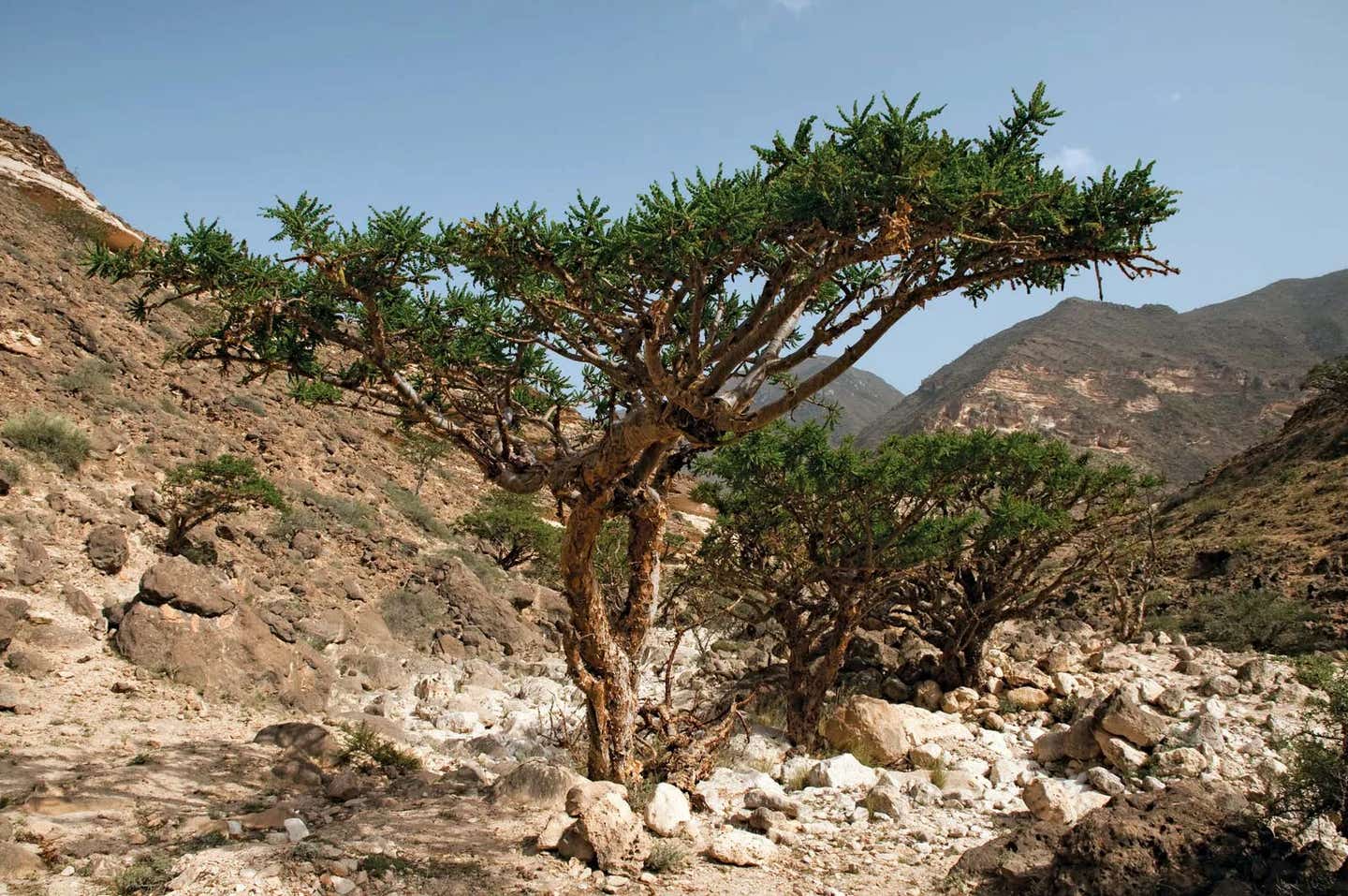Miraculous biblical ‘healing’ plant resurrected from a 1,000-year-old seed
Researchers have germinated an ancient seed from the southern Levant, revealing insights into lost plant species and cultural practices of the region.

This species, possibly referenced in texts like the Bible, could have been extinct in the region for centuries. (CREDIT: CC BY-SA 3.0)
In a groundbreaking discovery, researchers have successfully germinated and analyzed a seed that might unlock secrets about an ancient plant species once found in the southern Levant.
This species, possibly referenced in texts like the Bible, could have been extinct in the region for centuries. The seed, which sprouted into a unique plant named Sheba, offers insights into the botanical and cultural history of the area.
The seed was discovered during an archaeological excavation in a desert cave in Judea. Radiocarbon dating placed its origin between 993 and 1202 CE. It has given rise to a plant from the Commiphora genus, a notable achievement not just for seed longevity but also for what it reveals about the region's flora.
This research was published in Communications Biology and was led by Dr. Sarah Sallon from the Hadassah Medical Organization’s Natural Medicine Research Center in Jerusalem.
Dr. Sallon’s team was a diverse group, with members from Israel, the United States, Switzerland, Australia, Sweden, and France. They applied several advanced techniques, such as DNA sequencing, phylogenetic analysis, and phytochemical studies, to study this ancient seed.
Their work reveals that Sheba is unique compared to other known species of Commiphora, suggesting it might be either a previously unknown species or an extinct one, especially since no native Commiphora species exist today in the southern Levant.
Interestingly, Sheba's genetic profile has similarities to Commiphora species from southern Africa, adding to the mystery of how this plant came to be in the region. Although Sheba is not the oldest seed ever germinated, its presence in the Levant raises intriguing questions about the area's past agriculture, trade, and plant diversity.
Related Stories
This discovery also ties into ancient cultural references, particularly to the Balm of Judea or Balm of Gilead. These substances were highly valued in ancient times, often mentioned in biblical texts. Although Sheba does not closely resemble Commiphora gileadensis, the species commonly thought to be the source of the historical balm, its discovery suggests that similar plants were present in the region a millennium ago.
Further analysis of Sheba's chemical profile, conducted by Drs. Gavin R. Flematti and Björn Bohman of the University of Western Australia, revealed some unexpected results. Unlike what you might expect from a Commiphora species, Sheba does not produce many fragrant compounds.
Instead, it contains a series of novel compounds, including glycolipids that have not been previously described. These findings could have implications for pharmaceutical research, as new compounds often serve as leads for developing medicines.
The research team also considered historical texts and phytogeographic data to understand Sheba's place in the region's history. They propose that Sheba might represent an extinct or at least a locally extinct species of Commiphora.
This plant may have been the source of a substance called tsori, which is mentioned in the Bible. The Hebrew term tsori means "flow" or "drip" and was considered a valuable medicinal substance, though it was not specifically described as fragrant.
Tsori was referenced in several early biblical sources, such as Genesis and Jeremiah, which date from the Middle Bronze Age to the Iron Age. It has long been debated whether this substance was the same as the Balm of Judea, and although some have speculated this connection, the evidence has remained inconclusive.
The discovery of Sheba in the Rift Valley, between the Dead Sea and Jordan, supports the idea that it could be related to the historical tsori, tying it to the ancient region of Gilead.
Gilead, historically described as a fertile area between the Dead Sea and Jordan River, is mentioned in biblical writings as the origin of the balm. Today, this region falls within the Hashemite Kingdom of Jordan. The idea that Sheba, a plant found in the same region, could be linked to these historical descriptions of tsori provides a fascinating glimpse into the area's past.
The study also emphasizes the growing importance of resurrection genomics, a new field that allows scientists to overcome the limitations of studying degraded ancient DNA by working with living organisms regenerated from historical material.
This approach has the potential to advance your understanding of plant evolution, crop domestication, and biodiversity conservation. By growing these ancient plants, researchers can directly study traits that might have otherwise been lost to time.
Sheba is now growing under careful observation, and researchers hope it will eventually flower, allowing for a complete taxonomic description and potentially confirming it as a new species. The possibility of identifying a new plant species offers a rare opportunity to add to the botanical record and understand more about the diversity of life that once thrived in the region.
As you look at this remarkable discovery, it becomes evident that uncovering ancient plants is about more than just reviving a species. It’s about understanding the broader context of the environment, culture, and history in which that species existed.
Sheba not only adds to your knowledge of the past but also provides potential new compounds for future pharmaceutical and botanical research.
Note: Materials provided above by The Brighter Side of News. Content may be edited for style and length.
Like these kind of feel good stories? Get The Brighter Side of News' newsletter.
Joshua Shavit
Science & Technology Writer | AI and Robotics Reporter
Joshua Shavit is a Los Angeles-based science and technology writer with a passion for exploring the breakthroughs shaping the future. As a contributor to The Brighter Side of News, he focuses on positive and transformative advancements in AI, technology, physics, engineering, robotics and space science. Joshua is currently working towards a Bachelor of Science in Business Administration at the University of California, Berkeley. He combines his academic background with a talent for storytelling, making complex scientific discoveries engaging and accessible. His work highlights the innovators behind the ideas, bringing readers closer to the people driving progress.



